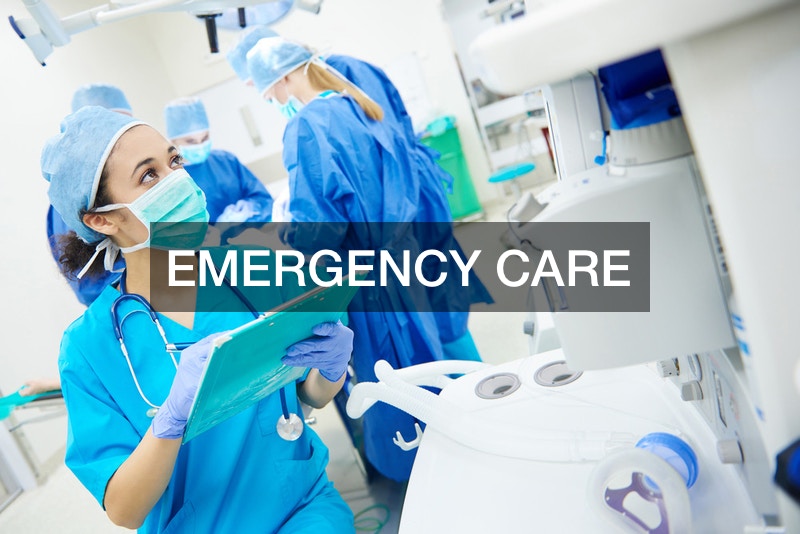
There are more options than ever before when it comes to getting medical care and emergency services. From urgent care federal way to small emergency room centers there are options for all of your urgent care and medical emergency needs. Not every condition, illness, or injury needs full emergency room care and can be treated at a smaller urgent care center.
The easiest way to answer the question of which one is right for your needs is to determine if the illness or injury is immediately life-threatening or overly dangerous for the patient. For example, stroke urgent care can save someone’s life, so the best care is needed right away and the emergency department is likely the best choice. Less serious conditions can be treated at an urgent care center.
Things to go to urgent care for include situations, such as sprains and strains, kidney stones, sore throats, seasonal allergies, colds, sinus infections, chest colds, bronchitis or pneumonia, earaches, skin infections or rashes, minor cuts and burns, pink eye, urinary tract infections, stomach bugs, and more. These medical professionals can help provide care and if more in depth or serious care is needed they can get you to the ER faster than trying to go and wait on it.
Many millions of Americans get injured or suffer illness every day, and they are going to need professional medical care. To get help, a nearby party such as a friend or parent may look up urgent care centers or emergency care centers, and take the victim there. Often, that person will look up these walk in clinics or hospitals online to get the name, address, and hours of operation of each medical site for reference. They can enter a more specific phrase, such as “skillful convenient and affordable care near me” or “urgent care for kids,” for example, and they may specify that a 24 hour site is needed. 24 hour emergency care is important if the victim needs help at an odd time of day, for example. The same may be done for urgent care, such as “24 hr skillful convenient and affordable care.” 24 hour walk in clinics can be found just about anywhere, and the staff there can treat a wide variety of health ailments.

Getting Urgent Care
Take note that urgent care and emergency care are two different things, the former meant for minor health issues and the latter for severe injuries or conditions. If it is not clear what level of care a patient may need, a person can look up hybrid care clinics, which offer both emergency and urgent care side by side. Such flexible clinics might show up in a search for either urgent or emergency care, such as “skillful convenient and affordable care” or “emergency care options nearby.”
Why go to urgent care? There are over 2,500 urgent care clinics found across the United States today, and visiting them is much faster and cheaper than visiting the hospital’s ER, thus “convenient care.” Searching for “skillful convenient and affordable care” may show some clinics all over the place, many of which are found in strip malls for convenience. Some others may be located in large retailers such as Wal-Mart or Target, and they are known as retail clinics. Yet others may be found in hospitals, and they offer distinct care and staff (they don’t mix with the hospital at large, for the convenience of patients). Some of these clinics are open 24 hours a day.
A typical urgent care clinic is a small and independent medical site, staffed with nurse practitioners and physicians who can handle a variety of health issues among their patients. Sometimes, these clinics form small local networks, too, and a guest may expect a wait time of around 15 minutes or so when they visit. A clinic that’s running smoothly may see around three patients per hour.
Four in every five walk in clinics provide treatment for bone fractures, and all of them can treat sprained wrists or ankles, which are quite common wounds. The nurses on staff can also treat bad cases of sunburn or skin rashes with ointment and lotion and other medicines, and they may also offer bandages and stitches for shallow cuts. Urgent care clinics also feature pharmacies in them, especially retail clinics, so guests can get prescription drug refills. During influenza season, it’s common for patients to arrive at these walk in clinics to get medicinal relief from the common cold and flu.

Emergency Care
Emergency care is slower and more expensive than urgent care, but for serious cases of injury or illness, emergency care is a must, such as a hospital’s ER. This can even save a life. A patient may be brought in if they have suffered a broken arm or leg, for example, or if they have experienced a head or eyeball wound. Stab wounds and bullet wounds also call for the ER, and such wounds may be bleeding heavily or involve internal organ damage. Difficulty breathing and chest pain also merit a visit to the ER, since these conditions may turn life-threatening at any moment, if they are not already. As for abdominal pain, most cases of abdominal pain are actually harmless, but if that pain is sudden, severe, and/or long lasting, emergency care is the best option since the underlying cause can be quite serious (such as internal bleeding or even cancer).